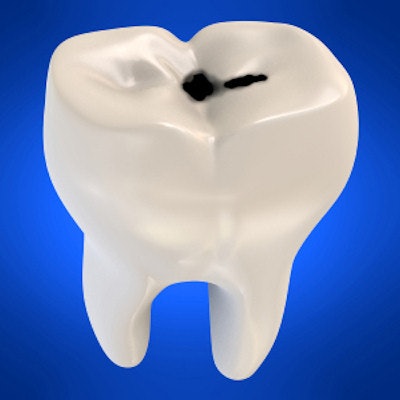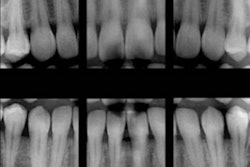
Detecting early caries lesions is difficult, and current imaging methods have shortcomings. To aid in finding these lesions, researchers compared the performance of a radiation-free near-infrared light transillumination (NILT) device with bitewing radiographs in finding these lesions.
Based on their study results, the researchers found that the NILT device (CariVu, DEXIS) was both sensitive and accurate enough to detect early interproximal carious lesions.
Examination with near-infrared light transillumination has "an appropriate sensitivity and diagnostic accuracy for detecting early interproximal caries lesions and can be considered as a method of choice for detecting caries without the use of ionizing radiation," the study authors wrote (BMC Oral Health, November 16, 2017).
The lead study author was İsmail Hakkı Baltacıoğlu of the department of restorative dentistry at the Ankara University Faculty of Dentistry in Turkey.
Difficult to detect
Early caries lesions can be difficult to detect, even when using conventional imaging methods. While many studies have used digital intraoral imaging for early carious lesion imaging, few studies have examined using so-called photo-optical methods for the early diagnosis of caries.
The researchers of the current study wanted to evaluate the diagnostic capability of near-infrared light transillumination and photostimulable phosphor plate (PSP) bitewing radiographs and also compare the interobserver and intraobserver differences, as well as observers' experience levels, in detecting early interproximal caries lesions in vivo.
The NILT method uses invisible long-wave light for caries detection. The major benefits are the decreased scattering of the beam, which allows near-infrared light to pass through objects more deeply, and that no ionizing radiation is used to visualize the interproximal caries lesions, according to the authors. It is a development of the digital imaging fiber-optic transillumination (DIFOTI) method. The primary difference between these systems is that the DIFOTI system uses visible light, whereas the NILT system uses invisible long-wave light.
For their study, the researchers included 26 patients with 52 untreated posterior teeth with and without varying degrees of early interproximal carious lesions. Images were taken using both bitewing radiographs using digital PSPs (Digora Optime, Soredex) and NILT. An oral and maxillofacial radiologist and a restorative dentistry consultant evaluated the images twice.
“The study results also revealed the good performance of NILT in the detection of early carious lesions.”
The following scale was applied for caries detection:
- Definitely caries
- Probably caries
- Uncertain
- Probably no caries
- Definitely no caries
For the NILT examination, images were obtained at different angles and analyzed by the two observers within two days from the other diagnostic findings. A total of 36 teeth were sent for clinical validation after having caries scores of 1, 2, or 3 on imaging.
The researchers reported "no significant differences" between the bitewing radiography and NILT for detecting early interproximal carious lesions. Both intraobserver and interobserver agreement values were relatively higher for the NILT evaluations.
Useful for confirming
The authors noted several study limitations, including that caries may still be in those teeth scored as a 4 or 5 on imaging and that the study used only two observers.
However, the authors concluded that near-infrared light transillumination has a role for detecting early caries lesions.
"The study results also revealed the good performance of NILT in the detection of early carious lesions," they wrote.



















